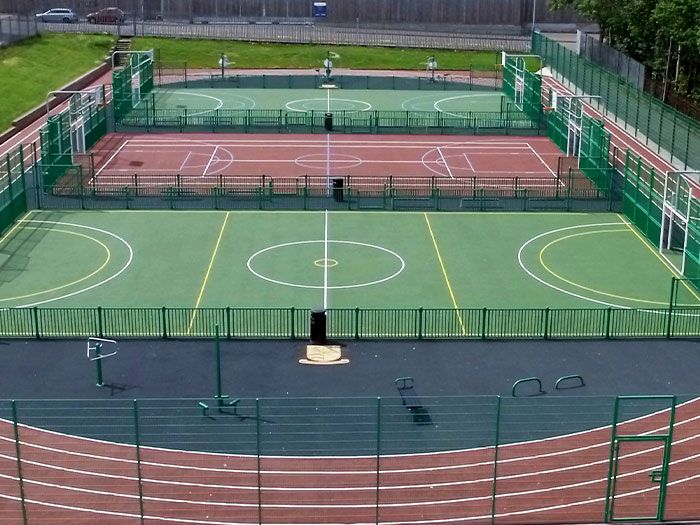The concept of perimeter is fundamental in the field of geometry, and when it comes to rectangles, understanding their perimeter is key to many practical applications. In this article, we will delve into the intricacies of the perimeter of a rectangle, including its formula, derivation, real-world applications, the relationship between its perimeter and area, as well as provide solved examples, practice problems, and answers to frequently asked questions.
Perimeter of a Rectangle
The perimeter of a rectangle refers to the total distance around its outer boundary, encompassing all four sides. It is essentially the sum of the lengths of all the sides. Unlike other polygons, calculating the perimeter of a rectangle is relatively straightforward due to its consistent side lengths.
Perimeter of a Rectangle Formula
The formula to find the perimeter of a rectangle is simple and concise:
where P represents the perimeter, length denotes the longer side, and width represents the shorter side of the rectangle. This formula ensures that all four sides are accounted for, as each side is counted twice (hence the multiplication by 2).
Derivation of the Perimeter of a Rectangle
The derivation of the perimeter formula for a rectangle is based on the fact that opposite sides of a rectangle are congruent. By summing up the lengths of two adjacent sides and then multiplying the result by 2, we ensure that all four sides are accounted for. This mathematical derivation highlights the inherent symmetry and regularity of a rectangle's shape.
Real-World Applications
The concept of perimeter plays a crucial role in a wide range of real-world applications.
Here are some practical scenarios where understanding the perimeter of a rectangle is essential:
Architecture
Architects and construction professionals rely on perimeter calculations to determine the required amount of materials for enclosing rectangular spaces. Whether it's installing fencing, determining the amount of flooring or carpet needed, or planning the layout of rooms, accurate perimeter measurements are vital for estimating costs and ensuring precise construction.

Landscaping and Gardening
In landscaping projects, the perimeter of a rectangular area is often calculated to determine the required amount of materials such as fencing, pavers, or retaining walls. Additionally, when designing gardens or planting beds, knowing the perimeter allows for accurate planning of plant placement, irrigation systems, and edging materials.
Interior Design
Interior designers frequently work with rectangular spaces such as rooms or furniture arrangements. By understanding the perimeter, designers can accurately plan the placement of furniture, artwork, and accessories, ensuring optimal use of space and creating visually appealing layouts.
Carpentry and Woodworking
Carpenters and woodworking enthusiasts require precise measurements to construct items like cabinets, shelves, or wooden structures. Calculating the perimeter of rectangular components ensures accurate material sizing and reduces waste, resulting in efficient and cost-effective projects.
Flooring and Tile Installation
When installing flooring or tiles, the perimeter measurement of the room is necessary to estimate the amount of flooring material or tiles required. Properly calculating the perimeter helps prevent delays and costly mistakes during installation.
Fencing and Property Boundaries
Whether it's a backyard fence, a property boundary, or a construction site enclosure, understanding the perimeter of a rectangular area is crucial for determining the necessary length of fencing material and ensuring accurate property demarcation.
Sports Fields and Playgrounds
The dimensions of sports fields, such as soccer, football, or baseball fields, are often rectangular. Knowing the perimeter of the field is essential for planning spectator areas, installing safety barriers, and accurately marking boundaries.

Art and Design
Artists and designers often work with rectangular canvases or frames. Understanding the perimeter allows for proper scaling and proportioning of artwork, ensuring the desired visual impact.
Packaging and Shipping
In the world of logistics and packaging, understanding the perimeter helps determine the appropriate box sizes and packaging materials needed to safely ship rectangular objects. Accurate measurements help prevent damage during transportation and optimize packaging costs.
Architecture and Urban Planning
Perimeter calculations are essential in urban planning when determining the boundaries of buildings, neighborhoods, or urban zones. Accurate perimeter measurements aid in zoning regulations, property development, and maintaining a harmonious urban landscape.
By grasping the concept of the perimeter of a rectangle and its real-world applications, individuals can make informed decisions in various fields and achieve greater efficiency in their projects.
Relationship Between The Area and Perimeter of a Rectangle
While the perimeter represents the total distance around the rectangle, the area measures the extent of the enclosed space. There is an interesting relationship between the area and perimeter of a rectangle.
Given a fixed area, the rectangle's perimeter can vary significantly depending on the dimensions. For instance, a rectangle with dimensions of 1 unit by 99 units will have the same area as a square with sides of 9 units, but their perimeters will be drastically different. This demonstrates that rectangles with the same area can have varying perimeters, emphasizing the importance of considering both factors when working with rectangles.
Solved Examples on the Perimeter of a Rectangle
Example: Find the perimeter of a rectangle with a length of 8 units and a width of 5 units. Solution: Using the perimeter formula, P = 2 * (length + width), we substitute the given values:
Therefore, the perimeter of the rectangle is 26 units.
Example: A rectangular garden has a perimeter of 32 meters, and one side measures 7 meters. Find the length of the other side.
Solution: Let's denote the length of the unknown side as L. The perimeter formula can be rearranged to solve for L:
16 = 7 + L
L = 16 - 7 = 9 meters.
Therefore, the length of the other side is 9 meters
Practice Problems on the Perimeter of a Rectangle
- A rectangular swimming pool has a length of 12 meters and a width of 6 meters. Calculate its perimeter.
- The perimeter of a rectangle is 56 centimeters, and its length is 15 centimeters. Determine the width of the rectangle.
- A rectangular piece of paper has a perimeter of 40 inches. If its width is 5 inches, find the length of the paper.
Conclusion
Understanding the concept of the perimeter of a rectangle is essential for a solid foundation in geometry. From its derivation and formula to its real-world applications, the perimeter of a rectangle serves as a vital tool in various fields. Additionally, recognizing the relationship between area and perimeter allows for a more comprehensive understanding of rectangular shapes. By exploring solved examples, practicing problems, and answering frequently asked questions, we hope to have provided you with a well-rounded understanding of the perimeter of a rectangle.

Can the perimeter of a rectangle ever be equal to its area?
No, the perimeter and area of a rectangle are distinct measurements. The perimeter represents the total distance around the rectangle, whereas the area measures the extent of the enclosed space. Since they measure different aspects of a rectangle, it is highly unlikely for the perimeter to be equal to the area.
Are all four sides of a rectangle required to be equal in length to calculate the perimeter?
No, in a rectangle, only the opposite sides are required to be equal in length. The two sets of parallel sides, known as the length and width, can have different measurements. The perimeter of a rectangle is calculated by adding the lengths of all four sides, which may have different values.
How does the perimeter of a rectangle compare to that of other polygons?
The perimeter of a rectangle differs from other polygons as it possesses distinct characteristics. Unlike irregular polygons, calculating the perimeter of a rectangle is relatively straightforward due to its consistent side lengths. Regular polygons, such as squares, also have equal side lengths, making their perimeter calculations similar to rectangles.
What is the significance of knowing the perimeter of a rectangle in real-life scenarios?
Knowing the perimeter of a rectangle is vital in numerous real-world applications. Architects and construction professionals rely on perimeter calculations to estimate material quantities for enclosing spaces. Landscapers use perimeter measurements to determine fencing or edging material requirements. Interior designers consider the perimeter for furniture placement, while artists and designers use it to scale and proportion their work. Additionally, accurate perimeter measurements are crucial in fields like packaging, sports field design, and urban planning.
How can I use the perimeter formula to solve problems involving rectangles?
The perimeter of a rectangle is calculated using the formula P = 2 * (length + width), where P represents the perimeter, length denotes the longer side, and width represents the shorter side of the rectangle. To solve problems involving rectangles, substitute the given values into the formula and perform the necessary calculations to find the perimeter.






